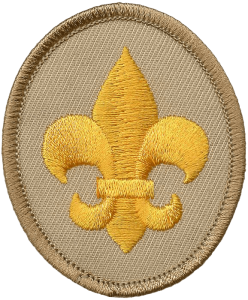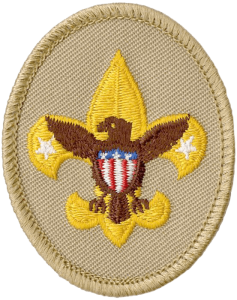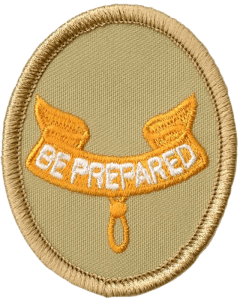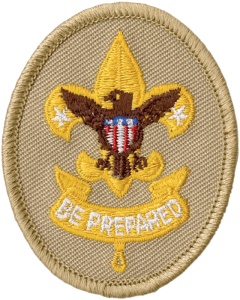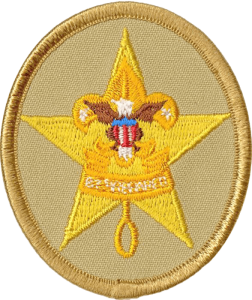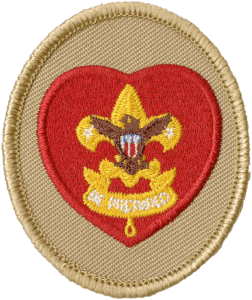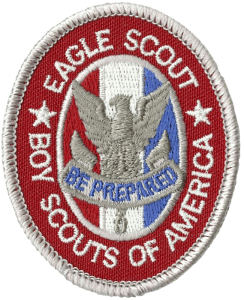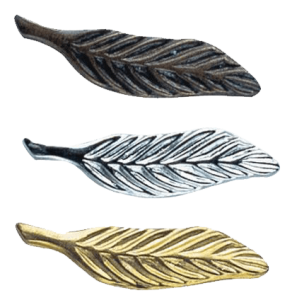Scouts BSA Ranks
The advancement program for Scouts of the Boy Scouts of America is symbolized by the earning of seven ranks. The advancement program is often considered to be divided into two phases. The first phase from joining to First Class is designed to teach the Scout Scoutcraft skills, how to participate in a group and to learn self-reliance. The Scout badge is awarded when the Scout demonstrates a rudimentary knowledge of the Scouting ideals and program. Tenderfoot, Second Class, and First Class have progressively harder requirements in the areas of Scoutcraft, physical fitness, citizenship, personal growth and Scout Spirit.
The second phase: Star, Life, and Eagle, is designed to develop leadership skills and allow the Scout to explore potential vocations and avocations through the merit badge program. The Star and Life ranks require that the boy serve in a position of responsibility and perform community service. Except for Scout rank (and Eagle Palms as of August 1, 2017), all ranks require that the candidate participate in a Scoutmaster conference and pass a Board of Review
Scout
Scout rank requirement resources include the Scout rank Worksheet, lesson videos showing Outdoor skills, and First-aid skills plus Merit Badges, and Scout Awards links. Troop resources include the Advancement Campout and monthly Troop Program Themes.
Youth can be Scouts if they have completed the fifth grade and are at least 10 years old, OR have earned the Arrow of Light Award and are at least 10 years old, OR are age 11 but have not reached age 18.
Tenderfoot
The advancement program for Scouts BSA is symbolized by the earning of seven badges each representing a different rank. The program is often considered to be divided into two phases.
The first phase of advancement (from Scout to First Class) is designed to teach the Scoutcraft skills, how to participate in a group, and to learn self-reliance. The Scout rank badge is awarded when the Scout demonstrates a rudimentary knowledge of the Scouting ideals and program, demonstrates basic Scoutcraft skills (knots & pocknetknife safety), and completes a youth protection and internet safety exercise with the Scout’s parents. Tenderfoot, Second Class, and First Class have progressively harder requirements in the areas of fitness, citizenship, personal growth, tools, cooking, first aid and emergency preparedness, aquatics, hiking and navigation, nature, outdoor ethics, and Scout Spirit.
Second Class
Second Class rank requirement resources include the Second Class rank Worksheet, lesson videos showing Outdoor skills, and First-aid skills plus Merit Badges, and Scout Awards links.
Troop resources include the Advancement Campout and monthly Troop Program Themes.
The advancement program for Scouts BSA is symbolized by the earning of seven badges each representing a different rank. The program is often considered to be divided into two phases.
The first phase of advancement (from Scout to First Class) is designed to teach the Scoutcraft skills, how to participate in a group, and to learn self-reliance. The Scout rank badge is awarded when the Scout demonstrates a rudimentary knowledge of the Scouting ideals and program, demonstrates basic Scoutcraft skills (knots & pocknetknife safety), and completes a youth protection and internet safety exercise with the Scout’s parents. Tenderfoot, Second Class, and First Class have progressively harder requirements in the areas of fitness, citizenship, personal growth, tools, cooking, first aid and emergency preparedness, aquatics, hiking and navigation, nature, outdoor ethics, and Scout Spirit.
First Class
First Class rank requirement resources include the First Class rank Worksheet, lesson videos showing Outdoor skills, and First-aid skills plus Merit Badges, and Scout Awards links. Troop resources include the Advancement Campout and monthly Troop Program Themes.
The advancement program for Scouts BSA is symbolized by the earning of seven badges each representing a different rank. The program is often considered to be divided into two phases.
The first phase of advancement (from Scout to First Class) is designed to teach the Scoutcraft skills, how to participate in a group, and to learn self-reliance. The Scout rank badge is awarded when the Scout demonstrates a rudimentary knowledge of the Scouting ideals and program, demonstrates basic Scoutcraft skills (knots & pocknetknife safety), and completes a youth protection and internet safety exercise with the Scout’s parents. Tenderfoot, Second Class, and First Class have progressively harder requirements in the areas of fitness, citizenship, personal growth, tools, cooking, first aid and emergency preparedness, aquatics, hiking and navigation, nature, outdoor ethics, and Scout Spirit.
Star
Star rank requirement resources include the Star rank Worksheet, Merit Badge Workbooks, and important Scout topics including Active, Scout Spirit, Scoutmaster Conference, and Board of Review.
The advancement program for Scouts BSA is symbolized by the earning of seven ranks. The program is often considered to be divided into two phases.
The second phase of Star, Life, and Eagle is designed to develop leadership skills and allow the Scout to explore potential vocations and avocations through the merit badge program. The Star, Life, and Eagle ranks require that the Scout serve in a position of responsibility and perform community service. All ranks (as well as Eagle Palms) require that the Scout participate in a Scoutmaster conference and pass a Board of Review.
Life
Life rank requirement resources include the Life rank Worksheet, Merit Badge Workbooks, and important Scout topics including Active, Scout Spirit, Scoutmaster Conference, and Board of Review.
The advancement program for Scouts BSA is symbolized by the earning of seven ranks. The program is often considered to be divided into two phases.
The second phase of Star, Life, and Eagle is designed to develop leadership skills and allow the Scout to explore potential vocations and avocations through the merit badge program. The Star, Life, and Eagle ranks require that the Scout serve in a position of responsibility and perform community service. All ranks (as well as Eagle Palms) require that the Scout participate in a Scoutmaster conference and pass a Board of Review.
Eagle
Eagle Scout rank requirement resources include the Eagle Rank Worksheet, Eagle Project and Checklist plus key Scout topics including Active, Scout Spirit, Scoutmaster Conference, and Board of Review. Also see the 12 Steps From Life to Eagle.
The Eagle Scout Rank is the highest rank attainable in the Scouts BSA program of the Boy Scouts of America. Since its introduction in 1911, the Eagle Scout Rank has been earned by more than 2 million young men. The title of “Eagle Scout” is held for life, thus giving rise to the phrase “Once an Eagle, always an Eagle”.
Requirements include earning a number of merit badges and demonstrating Scout spirit, service, and leadership. This includes an extensive service project that the Scout plans, organizes, leads, and manages. Eagle Scouts are presented with a medal and a badge that visibly recognizes the accomplishments of the Scout. Additional recognition can be earned through Eagle Palms, awarded for completing additional tenure, leadership, and merit badge requirements.
Eagle Palms
Eagle Palm requirement resources include the Eagle Palm Application, the Eagle Palm workbook, and Merit Badge Worksheets. Important Scout topics include Active, Scout Spirit, Scoutmaster Conference, and Board of Review.
First awarded in 1927, Eagle Palms are not considered ranks, but rather degrees of the Eagle Scout rank. The requirements include earning 5 additional Merit Badges than those required for the Eagle Scout rank. There may be a time limit requirement for each Palm depending on when earned (and the rules changed in 2017). Currently, Palms earned before the Eagle board of review have no time limit, and there is a 3-month waiting period for each successive Palm earned after the Eagle board of review.
The Eagle Scout rank requires that you earn 21 of the 137 current Merit Badges. You can continue to earn Merit badges and Eagle Palms until your 18th birthday. Currently the maximum number of Eagle Palms you can earn is 23, worn as seven silver palms and one gold palm (silver is “higher” than gold). If you had less than 26 merit badges at the time of your Eagle Scout Board of Review, you would need at least 3 months for each palm for a total of 69 months, or five years and 9 months after earning Eagle, and you would need to earn Eagle no later than 3 months after your 12th birthday.

